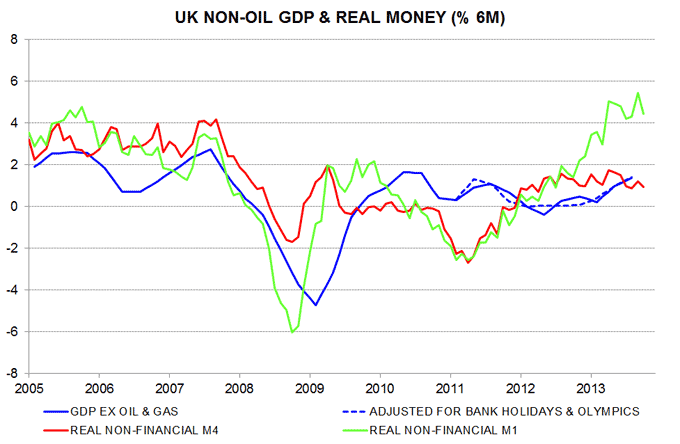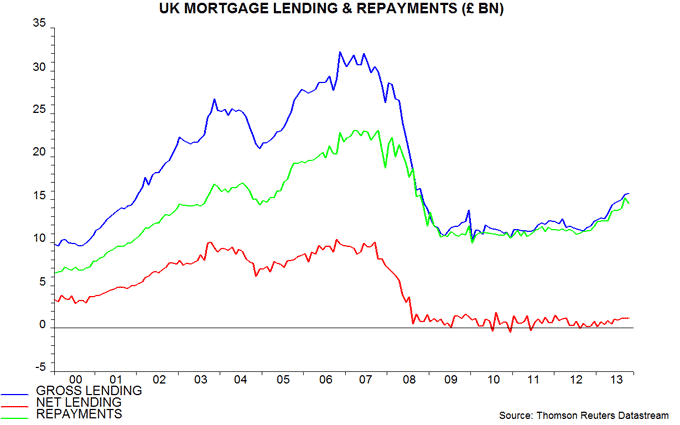UK monetary conditions remain expansionary but this does not reflect any boom in mortgage lending – yesterday’s changes to the funding for lending scheme, although probably inconsequential, were misguided.
Six-month growth of real non-financial M1* – the favoured monetary aggregate here – eased back in October but remained robust at 4.4%, or 9.1% annualised. Growth of real non-financial M4 is much lower but was little changed in October at 1.0%, or 1.9% annualised – see first chart.
As in the Eurozone but to a greater extent, economic strength is being driven by households and firms “dishoarding”, i.e. mobilising existing monetary savings, rather than by rapid expansion of broad money and credit. Such dishoarding involves a shift of funds out of time deposits and notice accounts into M1, explaining its superior forecasting performance. Put differently, the velocity of circulation of the existing stock of broad money is increasing.
Credit weakness is gradually abating but the stock of net lending to individuals, excluding student loans, grew by only 1.6% annualised in the latest three months. Talk of a borrowing binge, in other words, is nonsense. As previously discussed, repayments of mortgage debt have risen more or less in line with gross advances, resulting in little change in the net lending flow – second chart.
If economic strength caused by dishoarding / rising velocity is judged to pose an inflationary risk, the appropriate policy action is to raise Bank rate rather than throw another spanner in the credit machinery. A Bank rate hike would filter through to deposit rates, reducing the incentive to spend monetary savings. The knock-on effect on borrowing rates could be mitigated by making funding for lending and the capital regime more, not less, generous.
*Non-financial M1 = sterling notes / coin and sight deposits of households and private non-financial firms. M4 = M1 plus other sterling deposits, repos, bank bills / commercial paper and other bank securities of up to five years’ original maturity.

